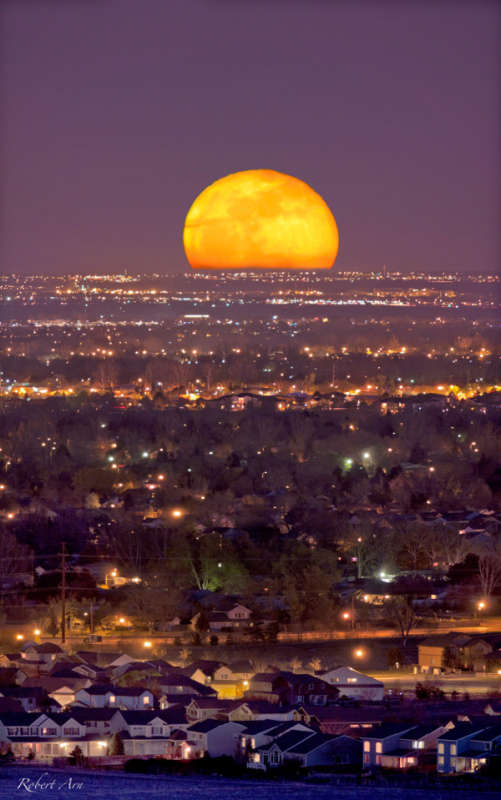
|
Credit & Copyright: Robert Arn
Explanation:
Rising as the Sun sets,
tonight's Full Moon could be hard to miss.
Remarkably, its exact full
phase (May 6 03:36 UT) will occur less
than two minutes after it reaches perigee,
the closest point to Earth in the Moon's orbit,
making it the largest Full Moon of 2012.
The Full Perigee Moon will appear to be
some 14 percent larger and 30 percent brighter
than a Full Moon near apogee,
the most distant point in the elliptical lunar orbit.
In comparison, though, it will appear less than 1 percent larger and
almost as bright as April's Full Moon, captured in
this
telephoto image rising over suburban Fort Collins, Colorado, USA.
For that lunation,
Full Moon and perigee were about 21 hours apart.
Of course, if you manage to miss May's Full Perigee Moon, make a
note on your calendar.
Your next chance
to see a Full Moon close to perigee, will be next year on June 23.
|
January February March April May June July August September October November December |
| ||||||||||||||||||||||||||||||||||||||||||||||||
NASA Web Site Statements, Warnings, and Disclaimers
NASA Official: Jay Norris. Specific rights apply.
A service of: LHEA at NASA / GSFC
& Michigan Tech. U.
Based on Astronomy Picture
Of the Day
Publications with keywords: full moon - perigee - lunation
Publications with words: full moon - perigee - lunation
See also:
